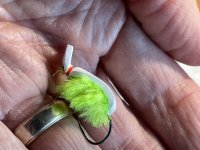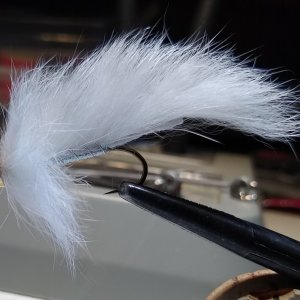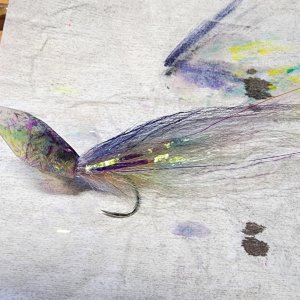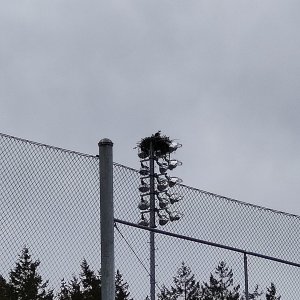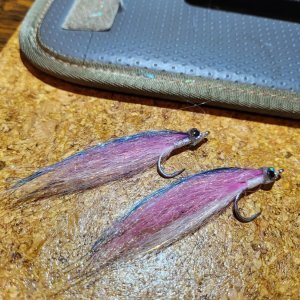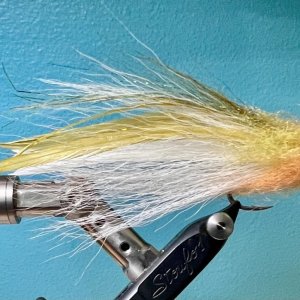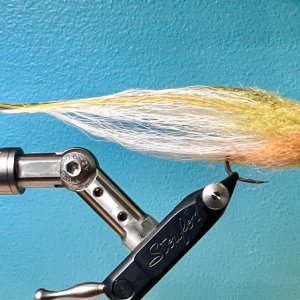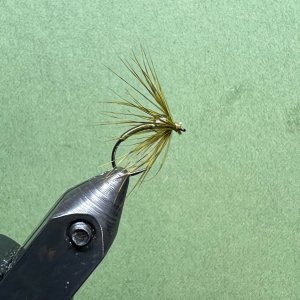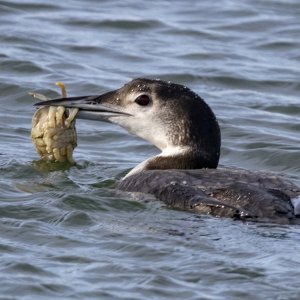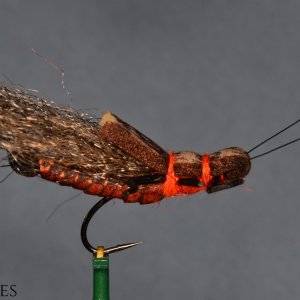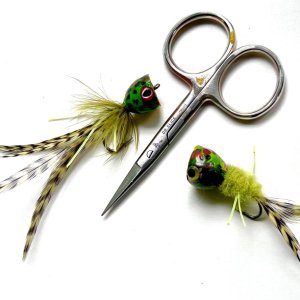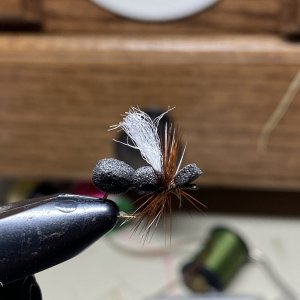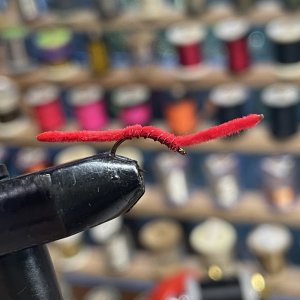Here's an informative video on basic techniques for those new to intermediate lines on the lake...enjoy.
You are using an out of date browser. It may not display this or other websites correctly.
You should upgrade or use an alternative browser.
You should upgrade or use an alternative browser.
Intermediate Line Technique
- Thread starter Wetswinger
- Start date
Here's an informative video on basic techniques for those new to intermediate lines on the lake...enjoy.
Wetswinger - I picked up two details: Washing Line - where have I been? Huh! And a refresher on the hang. Thanks. Very informative/
Here's an informative video on basic techniques for those new to intermediate lines on the lake...enjoy.
I went to the flyshop this afternoon thinking I'd add the line Mr. Gawesworth talks about for "murk
Cortland has a camo. Int. line on their web-site and others..
;-) I ordered one today.Cortland has a camo. Int. line on their web-site and others..
Piscihound
Just Hatched
I have one. I think it is probably the worst line I have ever bought. Tangle’s terribly. If you want to be as frustrated by a fly line as possible, send me your address and it’s yours!I went to the flyshop this afternoon thinking I'd add the line Mr. Gawesworth talks about for "murk" water, the line doesn't appear to be available anymore.
I got my Cortland Clear Camo WF6I yesterday, cut off the EEEEvil loop and knotted on about 9' of 12# Maxima Ultragreen, added a bit of 2X to that and fished it today. It does come off the spool with some memory but a good stretch and it's not nearly as kinky as (not as kinky as?) other kinky lines I've had and it casts really well.I have one. I think it is probably the worst line I have ever bought. Tangle’s terribly. If you want to be as frustrated by a fly line as possible, send me your address and it’s yours!
Thanks again for posting this. Watching this, then going out and doing it, has been helpful. Watching it again I picked up more. I retrieved slow, and got a lot of takes when I would pause. I like how the intermediate line really just hangs there. Mine's just a Clearwater, but it sinks slow and even, and is laying out straight now with no more coiling than my other lines.
You should like it, Once it gets some water on it.I got my Cortland Clear Camo WF6I yesterday, cut off the EEEEvil loop and knotted on about 9' of 12# Maxima Ultragreen, added a bit of 2X to that and fished it today. It does come off the spool with some memory but a good stretch and it's not nearly as kinky as (not as kinky as?) other kinky lines I've had and it casts really well.
Good luck, hope it works out for you. I'm feeling more confident, I only took the intermediate line rod today and it was fine.View attachment 114068
I'm going to use a gurgler tomorrow as the point fly and drop a weighted chironomid about a foot below the tippet ring. Hope a few chunky trout put a good stretch into the new intermediate line.
Did you get a chance to try out the washer line? Any success.?View attachment 114068
I'm going to use a gurgler tomorrow as the point fly and drop a weighted chironomid about a foot below the tippet ring. Hope a few chunky trout put a good stretch into the new intermediate line.
I've never seen a "gurgler" hatch. Which lakes have those?I'm going to use a gurgler tomorrow as the point fly and
I was sort of hoping this thread would go away ;-) I did try the washing line technique yesterday, my gurgler (which closely matches the crataegus oxyacantha hatch - commonly known as the homostupidous hatch) could perhaps use a bit more floatation as within a few strips the 1.5" - 2" pulled the fly under. I did get two grabs in the 15 minutes or so that I fished it this way. I don't know if the trout were striking the homostupidous* or the midge pattern.Did you get a chance to try out the washer line? Any success.?
My leader on this new line (which I cannot get all the memory coils out of) is about 9' long built from one length of 12# Maxima UG. I tied a 2mm tippet ring to the end of the leader; from the tippet ring I have about 4' of 2X to the gurgler. I dropped the midge about a foot below the 2mm tippet ring. I didn't get any tangles but I sure did get some twist on the dropper. There was absolutely no wind - I wanted to try this rig with some chop on the water.
*@Salmo_g - now you know what the gurgler hatch is and it's geographically isolated to Grant County and portions of Adams County.
Wayne Kohan
Life of the Party
That looks like the Pyramid Lake popcorn beetle from the Soggy Sleeves YouTube site. I tied up some of those and tried them on the weird big fish on Roosevelt and Rufus Woods, but have never had even a hit. Done with a type 6 line.View attachment 114068
I'm going to use a gurgler tomorrow as the point fly and drop a weighted chironomid about a foot below the tippet ring. Hope a few chunky trout put a good stretch into the new intermediate line.
Equipment can be frustrating. I've used my new Wulff intermediate for 3 full sessions and it's just starting to break the surface, most the time. It sure cast nice tho. I'll try th wash line next outing as I have some big ass saltwater gurglers. I'm not a big fan of droppers as I always get tangles, but what the hell.
Equipment can be frustrating. I've used my new Wulff intermediate for 3 full sessions and it's just starting to break the surface, most the time. It sure cast nice tho. I'll try th wash line next outing as I have some big ass saltwater gurglers. I'm not a big fan of droppers as I always get tangles, but what the hell.

Local hotspot.
I don't know shit. That said, here is my understanding and observations so far. A floating line and floating point fly let you fish your intermediate two flies on top or as near the surface as your dropper length. A couple buzzers won't pull it under.I was sort of hoping this thread would go away ;-) I did try the washing line technique yesterday, my gurgler (which closely matches the crataegus oxyacantha hatch - commonly known as the homostupidous hatch) could perhaps use a bit more floatation as within a few strips the 1.5" - 2" pulled the fly under. I did get two grabs in the 15 minutes or so that I fished it this way. I don't know if the trout were striking the homostupidous* or the midge pattern.
Using an intermediate line, your floating point fly is only going to float for a while even with a slow retrieve. Basically the flies are worked very slow. Like indicator fishing your not covering a lot of water compared to casting and stripping or trolling. The boobie is going to go under, especially with a bead head fly like the higas. The purpose of the floating fly at the end is to keep the other 2 flies at the same depth as the end of the line, then it will hang or slowly rise on the pause (hold on here). Your covering an area of water at a depth you think the fish are at, or maybe say waiting for the fish to find you. Countdown to know working depth.
Heavy intermediate flies like the leech or willy will bring it down faster and work at more uneven depths.
Last edited:
Thanks Tom -I don't know shit. That said, here is my understanding and observations so far. A floating line and floating point fly let you fish your intermediate two flies on top or as near the surface as your dropper length. A couple buzzers won't pull it under.
Using an intermediate line, your floating point fly is only going to float for a while even with a slow retrieve. Basically the flies are worked very slow. Like indicator fishing your not covering a lot of water compared to casting and stripping or trolling. The boobie is going to go under, especially with a bead head fly like the higas. The purpose of the floating fly at the end is to keep the other 2 flies at the same depth as the end of the line, then it will hang or slowly rise on the pause (hold on here). Your covering an area of water at a depth you think the fish are at, or maybe say waiting for the fish to find you. Countdown to know working depth.
Heavy intermediate flies like the leech or willy will bring it down faster and work at more uneven depths.
I'm headed north tomorrow morning for a couple days and hope to play around with this technique a bit. I should tie one more gurgler that's just a tad more buoyant but I don't want to scare the trout with a larger hawthorne tree. ;-)

